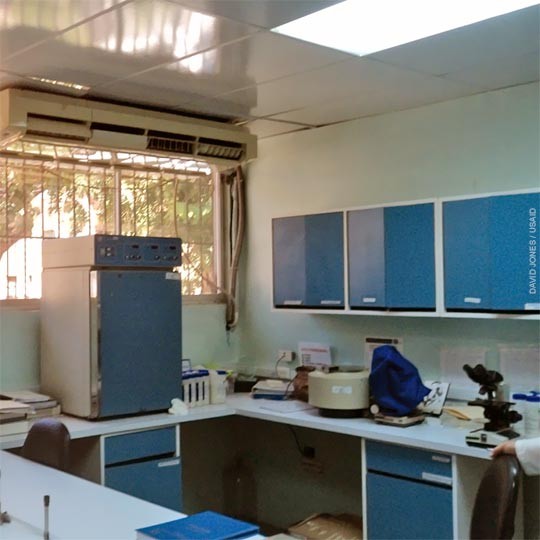Load Characterization
Off-grid health facility loads can be categorized into critical and non-critical loads, which helps in attributing the appropriate energy supply source to a particular end-use equipment. Learn more
You are viewing:
Information released online before January, 2021.
Note: Content in this archive site is NOT UPDATED, and external links may not function. External links to other Internet sites should not be construed as an endorsement of the views contained therein.
You are entering the 2017-2020 Archive for the
United States Agency for International Development web site.
If you are looking for current information, visit www.usaid.gov.

Before investing in any energy technologies, a health facility must first understand its current day-to-day energy requirements. An initial energy audit is critical to ensuring proper system design and operation.

An initial load and energy analysis of an off-grid health facility is a critical component to facilitate the design and operation of energy supply systems. When properly executed, a load analysis can yield valuable insights into facility energy usage that can help reduce energy costs, increase productivity, and protect critical assets.
A basic load analysis involves creating a table that shows power ratings, or loads (in Watts), of all electrical equipment in the facility, along with an estimate of the number of hours each piece of equipment will operate on a daily basis. This results in an estimate of facility energy consumption, the number of Watt-hours used by the facility per day, and the total facility electrical load. These two basic metrics, load and consumption, form the basis for the design of energy supply and distribution systems, such as photovoltaic (PV) panels, battery banks, inverters, generators, electrical circuits, and uninterruptible power supply (UPS) systems. They are also used to track increases or reductions in energy usage, a key energy management indicator.
The following resources explain the basic methodology of performing load analyses, best practices and lessons learned, and a number of example load calculations for different types and sizes of health facilities.
Off-grid health facility loads can be categorized into critical and non-critical loads, which helps in attributing the appropriate energy supply source to a particular end-use equipment. Learn more
The load and energy consumption profile of an off-grid health clinic helps in developing energy indices that can be used to compare its energy performance with that of similar health facilities. Learn more
An off-grid health facility’s load calculations vary depending on its size, which is determined by the number of patient beds and health services provided. Learn more
This exclusive online version of the HOMER Powering Health Tool evaluates hybrid power systems to determine the most cost-effective options for delivering continuous electricity to health facilities. Use the tool
An energy audit helps develop an inventory and pattern of operation of energy equipment within a health facility, which enables the cost-effective planning and management of energy supply systems. Learn more
Comment
Make a general inquiry or suggest an improvement.